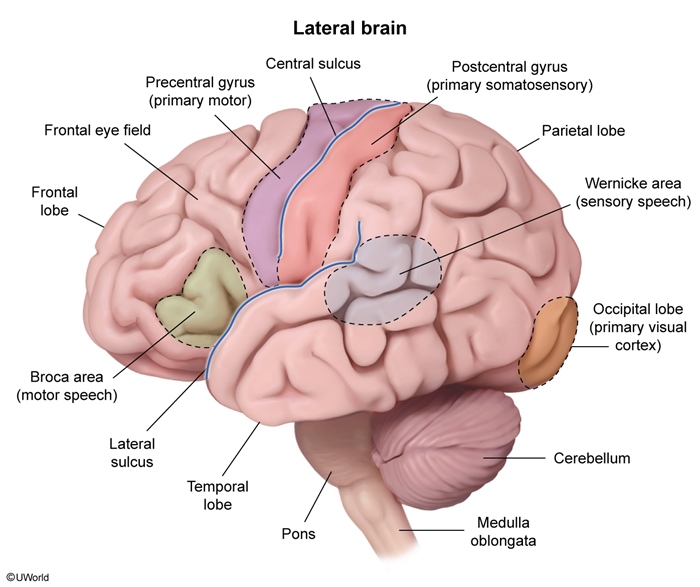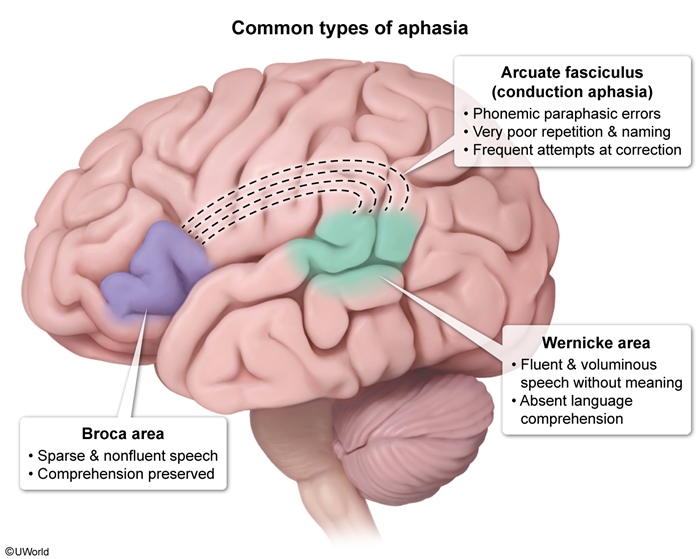Neuroanatomy: Cortical Lobe Function, Basic Tracts, Arterial Anatomy, And Neurolocalization
Article Sections
Introduction
Neuroanatomy provides the foundation for understanding the functional organization of the central nervous system (CNS). The brain and spinal cord contain a network of neural tracts responsible for transmitting motor, sensory, and autonomic information. Damage to these pathways results in characteristic clinical deficits, which allows for localization of neurological lesions based on the tracts involved. This article reviews the basic organization of cortical lobes and key tracts in the CNS and describes how lesions at different levels lead to specific patterns of deficits, concluding with a discussion of arterial anatomy and stroke localization.
Cortical lobes: Overview
Each cerebral lobe is specialized for distinct functions, with significant interconnectivity between regions (Figure 1). Damage to any area can lead to characteristic clinical syndromes, depending on the specific lobe involved. The right and left hemispheres also have specialized functions based upon which is considered the "dominant" hemisphere, which can impact how a lesion may present. Almost 90% of right-handed patients and 60% of left-handed patients have a
Continue Learning with UWorld
Get the full Neuroanatomy: Cortical Lobe Function, Basic Tracts, Arterial Anatomy, And Neurolocalization article plus rich visuals, real-world cases, and in-depth insights from medical experts, all available through the UWorld Medical Library.
Figures





